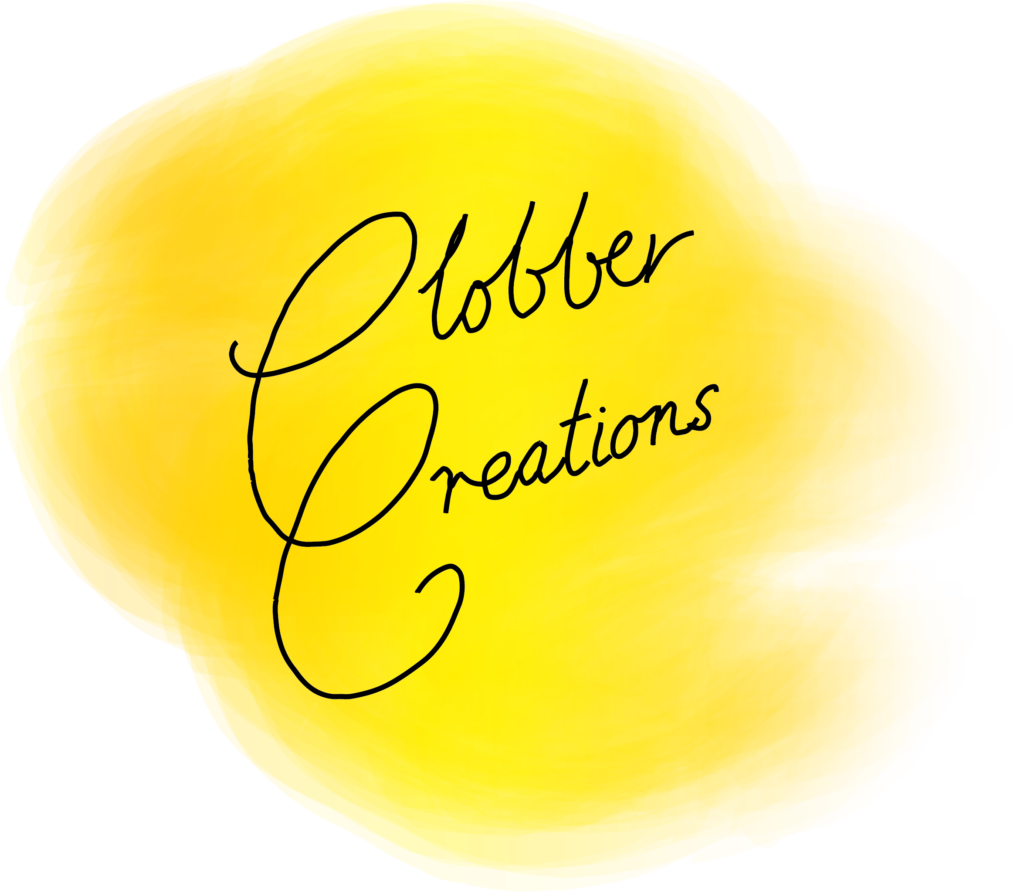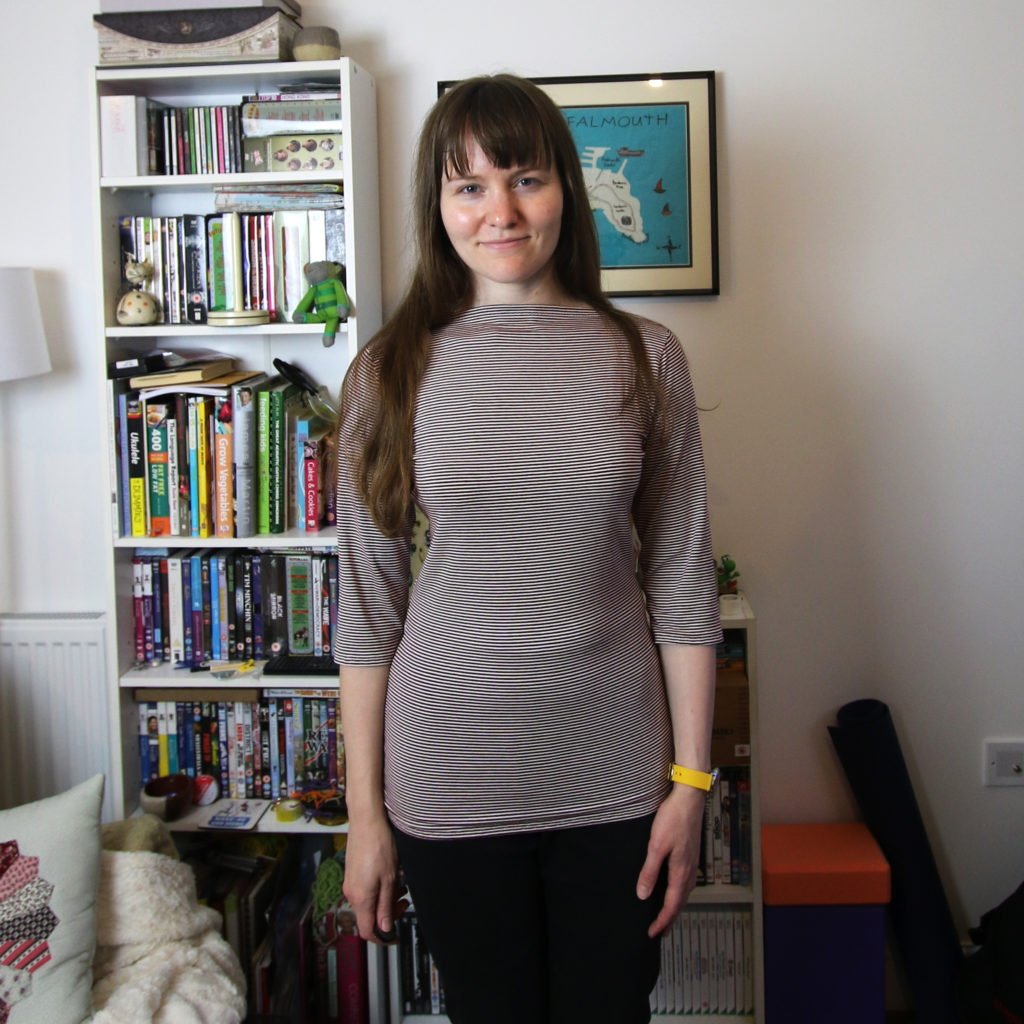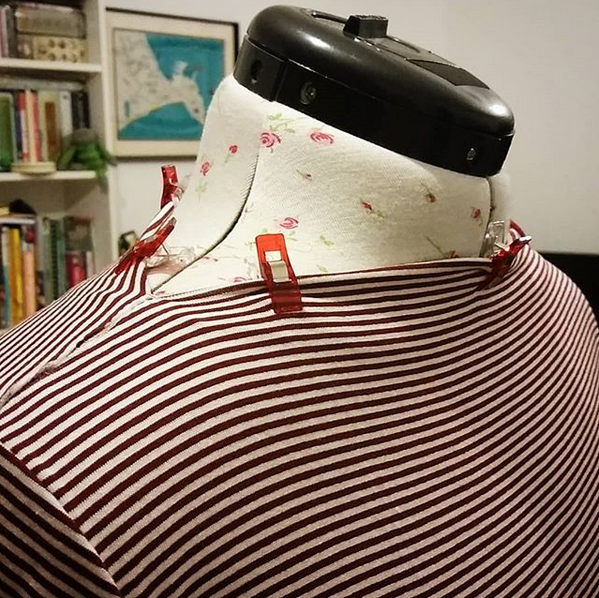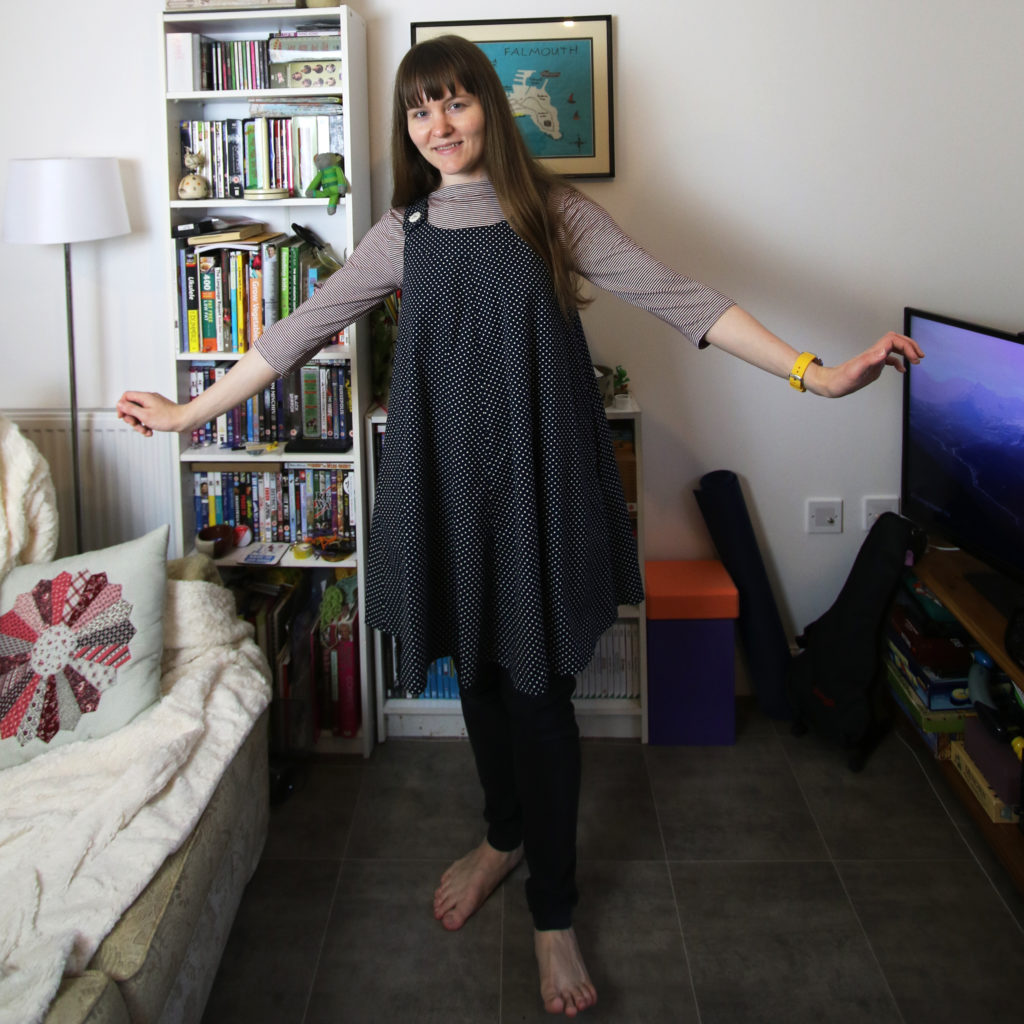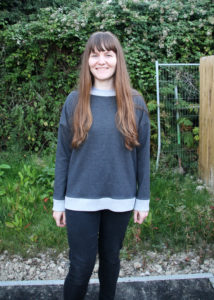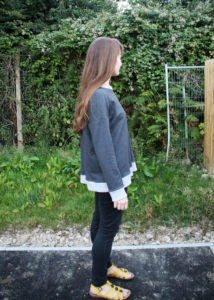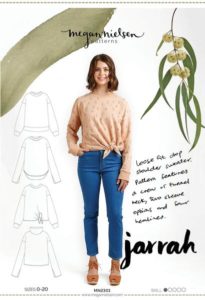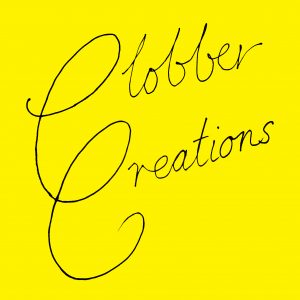Pattern Review: Debbie Shore Office Bag
- Post author:clobbercreations
- Post published:October 6, 2019
- Post category:Accessories/Sewing
- Post comments:0 Comments
I’m going a bit different this week with my pattern review and sharing my thoughts on an accessory pattern – the office bag from “Sew Brilliant Bags” by Debbie Shore.
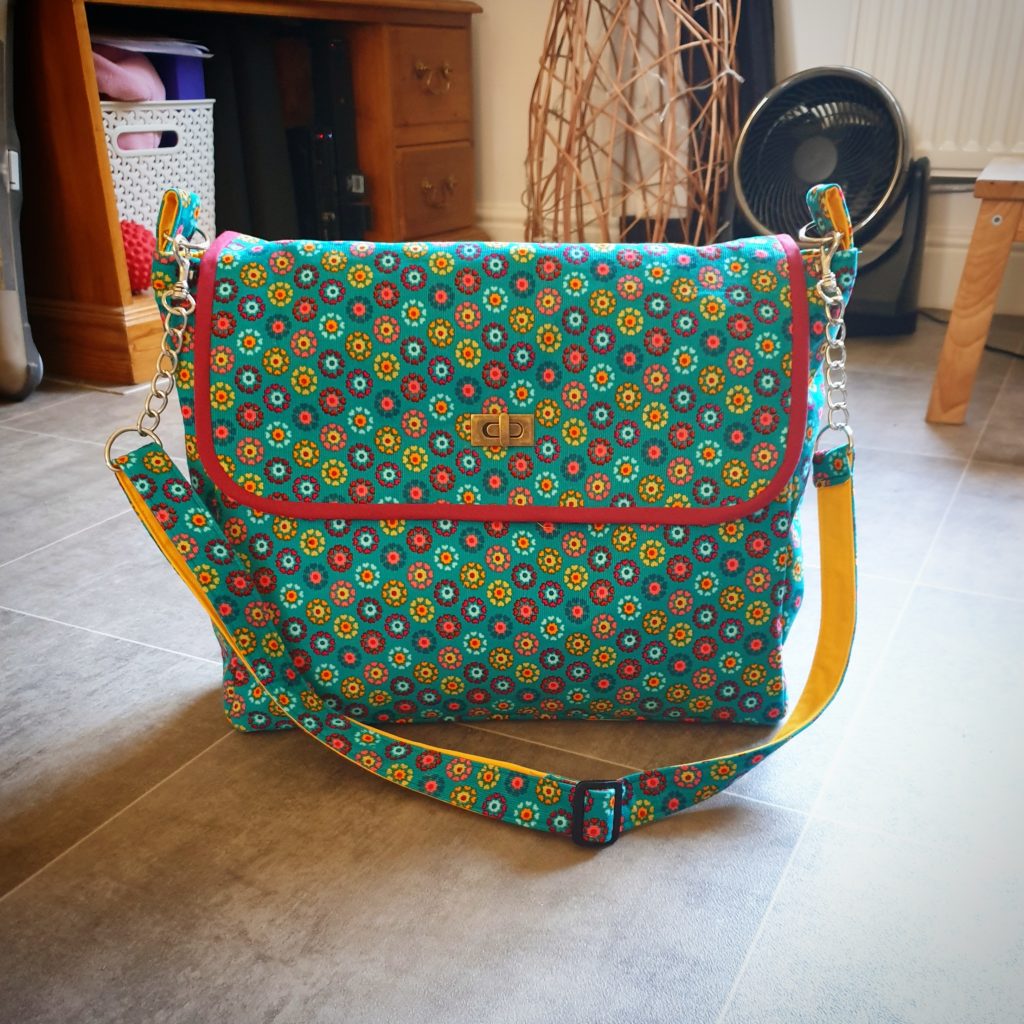
Details
- Pattern name: Office bag
- Variation/Style: As instructed – N/A
- Design House: Debbie Shore
- Size I made: As per instructions (however it may not be accurate due to seam allowance used)
Fabric and other items
I used a brilliant needlecord fabric I picked up from Fabrics Galore a few years ago at the Knitting and Stitching show at Westpoint in Exeter. I used the fabric to make a pinafore, but had some remnants to make up this bag. For the lining/contrast fabric, I used some yellow cotton twill that I had been saving for an apron (hopefully I still have enough to do that too!)
As I was worried that the needlecord may not be strong enough to withstand the wear and tear of being a heavily used bag, I reinforced it with interfacing. The pattern also suggests using fusible fleece to give the bag more structure.
Other attachments included a metal twist clasp for the flap, two D-rings, two swivel clasps and a slider to make the shoulder strap fully adjustable.
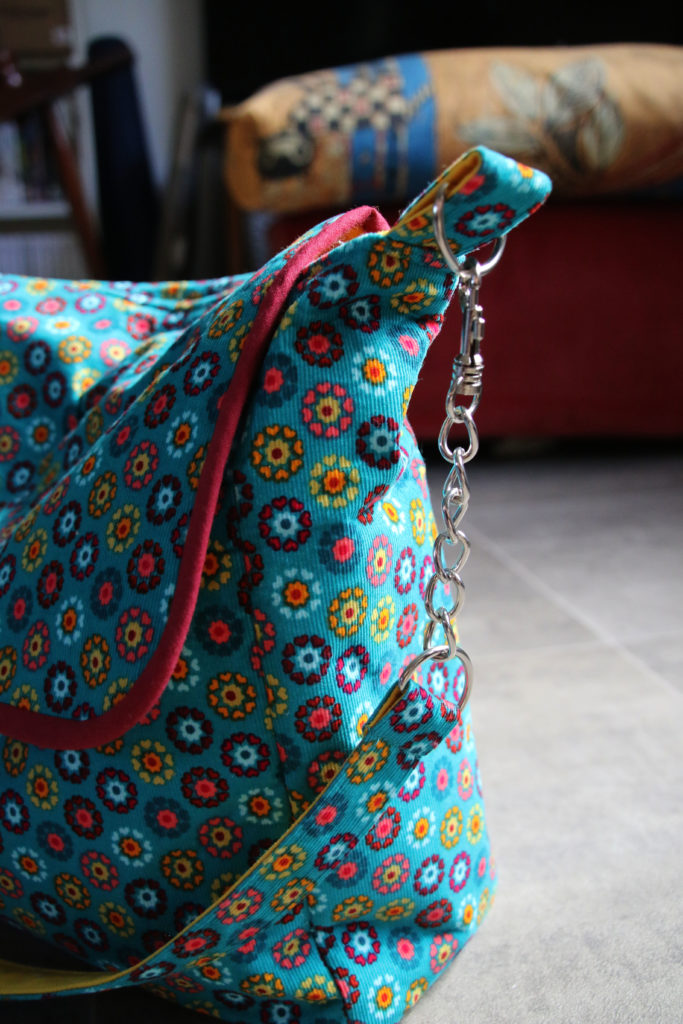
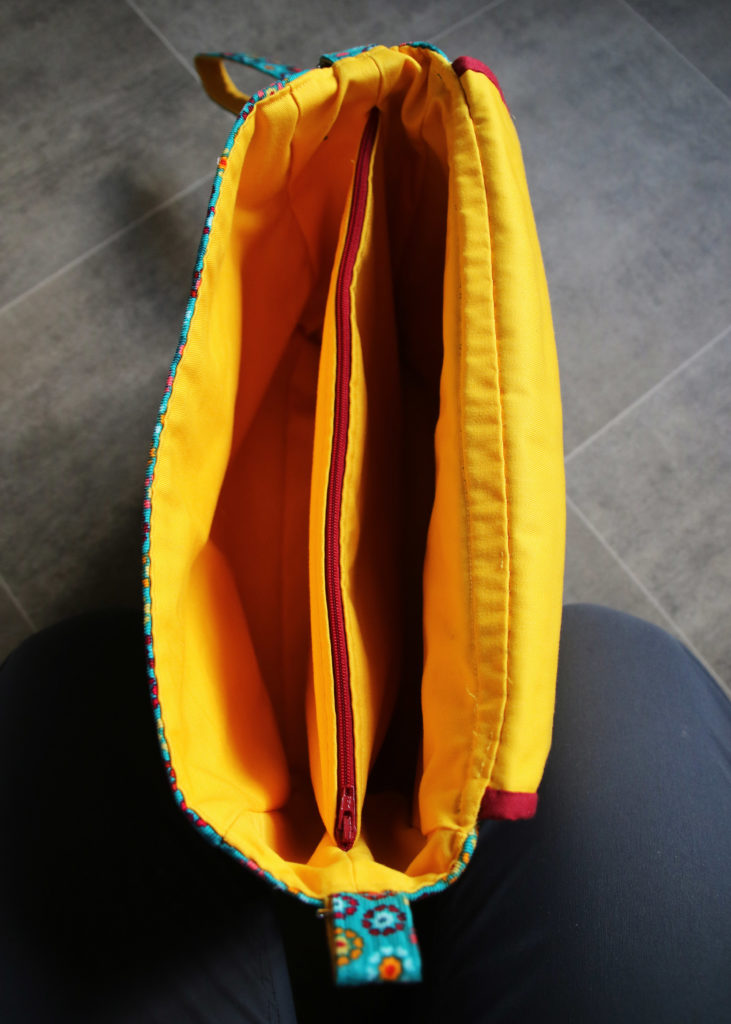
Difficulty
I think this bag looks more complicated than it is, and as it is predominantly made from rectangular shapes, it is quite straightforward. I found the strap a nightmare to turn right sides out, but this may have been an issue with the seam allowance I used, which I will explain more below…
The most challenging aspect for me was stitching the bottom corners of the lining of the bag. If you are not used to bias binding, you may find the flap edging a bit challenging, but Debbie’s instructions at the front of the book on this were very useful, and it is probably a good practice project as there’s not too much of it. I machine stitched the front side to the flap and then hand-stitched the other side of the bias binding tape as I like this finish.
Clarity
Unfortunately, I found that the pattern lacked clarity in areas. First, it is worth noting that she does not state anywhere what the seam allowance is. Perhaps you are meant to add your own, or you are to assume that it is 1/4 inch like most quilting-based projects. As I don’t follow many patchwork or quilt based patterns, I am not used to assuming the seam allowance and presumed there would be an indication somewhere. If I have missed this in the book, please can someone advise which page it is on!
As a result, I used 1/2 inch seam allowances throughout, and I think this caused my straps to be way narrower than they should have been. I ended up finding other D-rings and swivel clasps to use, which was frustrating as I bought some especially for the project, but didn’t have enough fabric to correct the error.
Another error is in the lining measurements for cutting out the base pieces and side pieces. These measurements are mixed up, and I only realised at the point when I was about to stitch them. Fortunately, to correct it, I only had to shorten two of the pieces rather than re-cut as I was using a plain fabric, but if you were using a patterned fabric and the direction of the print mattered more, you would need to cut this correctly!
I didn’t understand the instructions that well for stitching the flap onto the outer bag either, and next time I would just do my own thing rather than try to make myself understand as I wasn’t too happy with the end result in this aspect.
There are some good pictures in the book, but in a way, I felt like there could have been more. However, if you are used to making bags, this may not be an issue.
Design and Fit
Despite the issues I had with clarity, I really love the design of this bag – in fact, I love it more now that I have made it. The reason I love it is because the lining piece means that your bag has three sections – two open sections (of equal size) and in between them is a zipped pocket. I found the construction of this section marvelous and while I may add more pockets to another version, I would definitely make this middle zip divider section again.
I really like the bias binding on the flap as well, and it’s really grown my confidence in using bias binding.
Time Taken
The longest part of the making this bag for me was cutting all the pieces out. While it wasn’t too arduous as it was a series of rectangles, I had to cut a lot of them and as there are no pattern pieces, you need to accurately draw them out yourself. Also, I had the additional step of interfacing all the needlecord fabric pieces.
I reckon it is a project you could do within a weekend comfortably, including the cutting out stage.
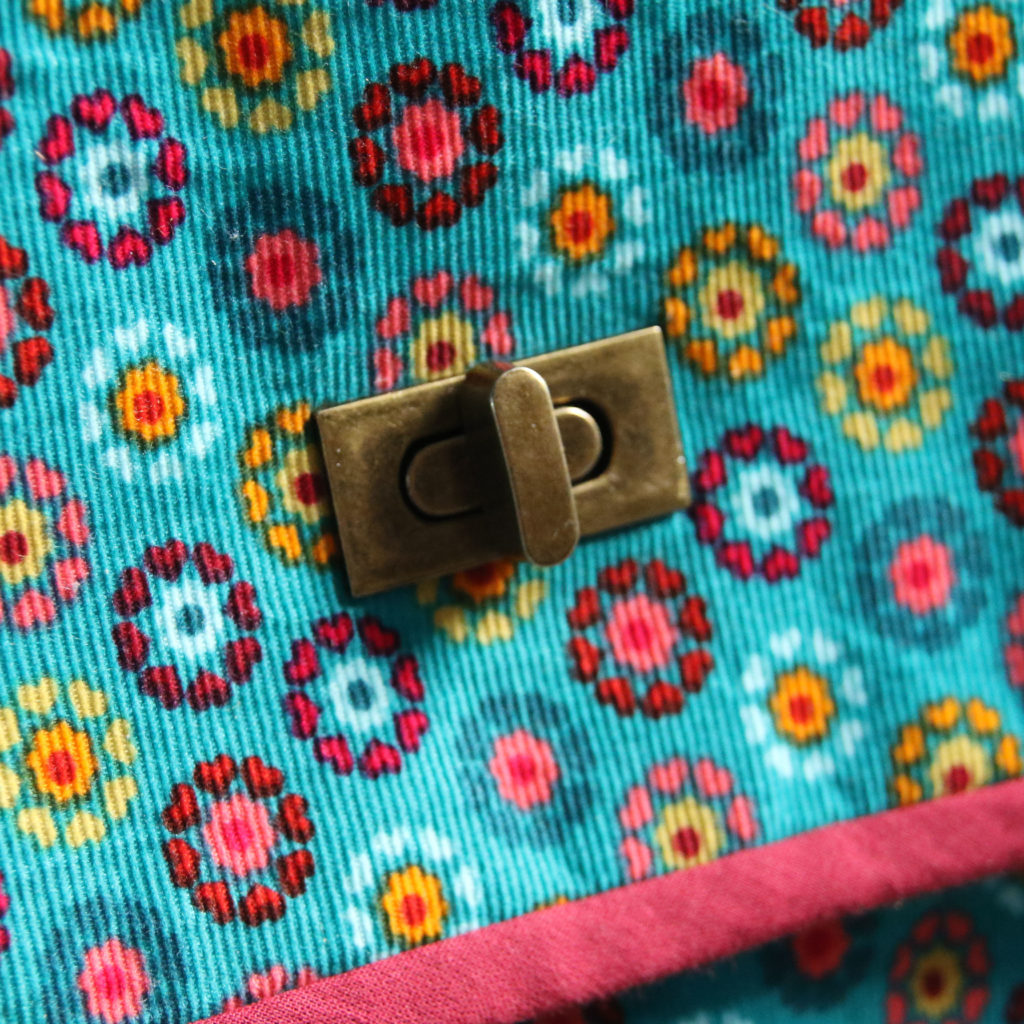
Conclusion
I am really happy with the end result, but I do have some caveats. I would advise anyone doing this pattern or any in the book to check that the measurements make sense to ensure you cut out the correct-sized pieces! Also, have a read through of the pattern first to ensure it makes sense, and to work out whether you want to make any adjustments.
You can watch my video review below:
